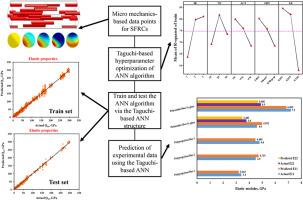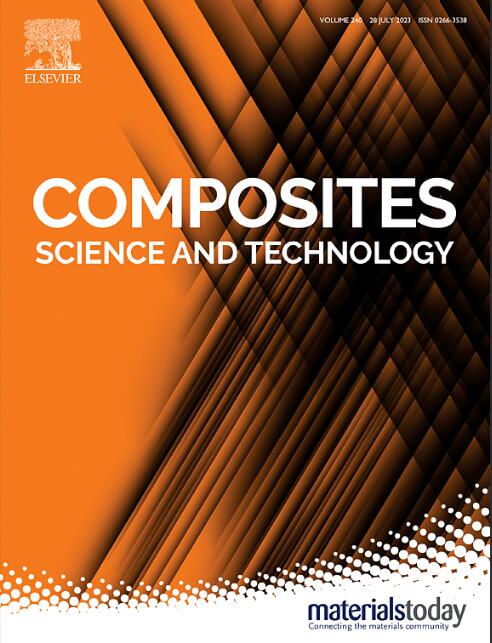A novel Taguchi-based approach for optimizing neural network architectures: Application to elastic short fiber composites
IF 8.3
1区 材料科学
Q1 MATERIALS SCIENCE, COMPOSITES
引用次数: 0
Abstract
This study presents an innovative application of the Taguchi design of experiment method to optimize the structure of an Artificial Neural Network (ANN) model for the prediction of elastic properties of short fiber reinforced composites. The main goal is to minimize the computational effort required for hyperparameter optimization while enhancing the prediction accuracy. By utilizing a robust experimental design framework, the structure of an ANN model is optimized. This approach involves identifying a combination of hyperparameters that provides optimal predictive accuracy with the fewest algorithmic runs, thereby significantly reducing the required computational effort. The results suggested that the Taguchi-based developed ANN model with three hidden layers, 20 neurons in each hidden layer, elu activation function, Adam optimizer, and a learning rate of 0.001 can predict the anisotropic elastic properties of short fiber reinforced composites with a prediction accuracy of 97.71 %. Then, external validation of the proposed ANN model was done using experimental data, and differences of less than 10 % were obtained, indicating an appropriate predictive performance of the proposed ANN algorithm. Our findings demonstrate that the Taguchi method not only streamlines the hyperparameter tuning process but also substantially improves the algorithm's performance. These results highlight the potential of the Taguchi method as a powerful tool for optimizing machine learning algorithms, especially in scenarios where computational resources are limited. The implications of this study are far-reaching, offering insights for future research in the optimization of different algorithms for improved accuracies and computational efficiencies.

基于田口的优化神经网络架构新方法:应用于弹性短纤维复合材料
本研究创新性地应用了田口试验设计法来优化人工神经网络(ANN)模型的结构,以预测短纤维增强复合材料的弹性特性。主要目标是在提高预测精度的同时,最大限度地减少超参数优化所需的计算量。通过利用稳健的实验设计框架,可以优化 ANN 模型的结构。这种方法包括确定超参数组合,以最少的算法运行次数获得最佳预测精度,从而大大减少所需的计算工作量。结果表明,基于田口方法开发的具有三个隐层、每个隐层 20 个神经元、elu 激活函数、Adam 优化器和 0.001 学习率的方差分析网络模型可以预测短纤维增强复合材料的各向异性弹性特性,预测准确率达 97.71%。然后,利用实验数据对所提出的方差网络模型进行了外部验证,得到的差异小于 10%,表明所提出的方差网络算法具有适当的预测性能。我们的研究结果表明,田口方法不仅简化了超参数调整过程,还大大提高了算法的性能。这些结果凸显了田口方法作为优化机器学习算法的强大工具的潜力,尤其是在计算资源有限的情况下。这项研究意义深远,为今后优化不同算法以提高精确度和计算效率的研究提供了启示。
本文章由计算机程序翻译,如有差异,请以英文原文为准。
求助全文
约1分钟内获得全文
求助全文
来源期刊

Composites Science and Technology
工程技术-材料科学:复合
CiteScore
16.20
自引率
9.90%
发文量
611
审稿时长
33 days
期刊介绍:
Composites Science and Technology publishes refereed original articles on the fundamental and applied science of engineering composites. The focus of this journal is on polymeric matrix composites with reinforcements/fillers ranging from nano- to macro-scale. CSTE encourages manuscripts reporting unique, innovative contributions to the physics, chemistry, materials science and applied mechanics aspects of advanced composites.
Besides traditional fiber reinforced composites, novel composites with significant potential for engineering applications are encouraged.
 求助内容:
求助内容: 应助结果提醒方式:
应助结果提醒方式:


